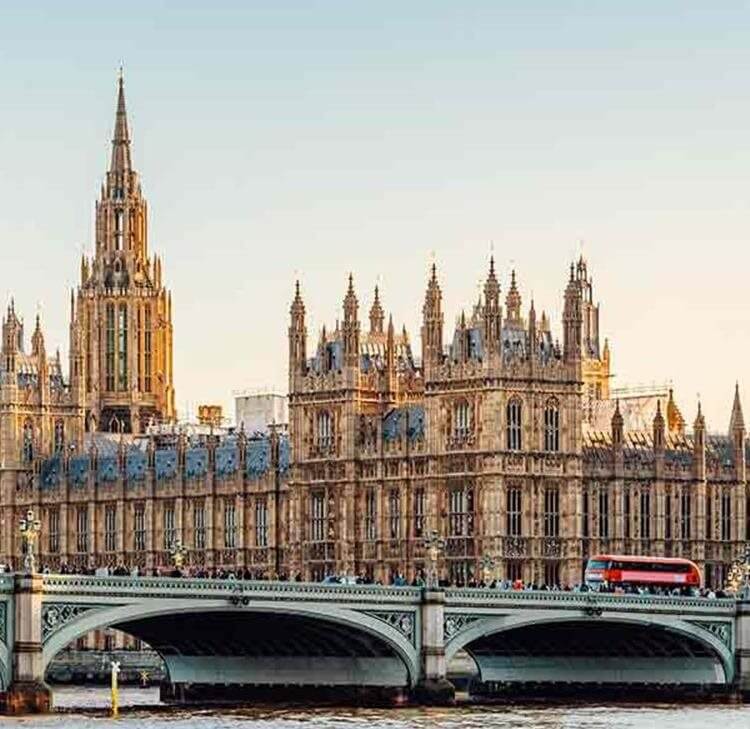Subsidy control after Brexit - a practitioner's perspective
Back in late 2020, we waited expectantly for news of what the rules on state aid were going to be when the Brexit transition period ended on 31 December.
Back in late 2020, we waited expectantly for news of what the rules on state aid were going to be when the Brexit transition period ended on 31 December. We, like many others, hoped that the existing state aid regime would be continued on a transitional basis until a new subsidy control regime could be put in place. However, the Government made clear its intention to repeal the old regime without setting out proposals for its replacement. No further details were available until the Government announced that agreement had been reached with the EU on the EU-UK Trade and Cooperation Agreement (TCA) a free trade agreement which included the core principles of a new subsidy control regime for the UK. At this point it became clear that state aid practitioners were going to be spending their Christmas break reading through the TCA in order to understand the new rules which would apply from 1 January 2021.
We do not seek to summarise the TCA in this article, but the key point is that it is intended to be permissive rather than restrictive. A subsidy may be granted, provided it complies with six principles set out in the TCA, and it is not prohibited. There are a few additional restrictions on the ability of a public body to grant a subsidy as far as the TCA is concerned. There are specific but limited rules on de-minimis subsidies (with a higher threshold than under the State aid De-Minimis Regulation) and rules on Services of Public Economic Interest (SPEI) - the replacement for Services of General Economic Interest under the State aid rules. But there are no block exemptions, regulations or decisions which place obligations or restrictions on how subsidies may be granted.
The six principles themselves are aimed at ensuring that only subsidies which will not have a ‘material effect’ on trade or investment between the UK and the EU are granted. They are somewhat esoteric, and appear to be, in effect, an approximation of the decision-making process that the EU Commission goes through when it determines whether State aid is lawful. However, for many public authorities, interpreting them can be an onerous task. Some are straightforward enough - it is usually clear whether a subsidy is pursuing a specific public policy objective (the first principle). To know whether “the positive contribution of a subsidy will outweigh any negative effects, in particular the negative effects on trade or investment between the parties” (the sixth principle) on the other hand, is more difficult, seeming to require a high level oversight of the state of trade or investment between the UK and the EU. This is clearly something central government and the EU Commission will have but presents more of a problem for sub-central authorities.
The difficulty arises from a lack of detail within the TCA and a lack of guidance on how the TCA should be interpreted. The TCA has a single chapter on subsidy control, a mere 13 Articles replacing decades of EU instruments, decisions and cases. The only guidance on the UK’s subsidy control rules is the Technical Guidance on the UK’s International Subsidy Control Commitments, published on 31 December 2020.This document’s focus is compliance with the World Trade Organisation Agreement on Subsidies and Countervailing Measures and other Free Trade agreements – international commitments which are unlikely to impact upon the majority of subsidy measures granted by local authorities. This means that lawyers and clients seeking to interpret the subsidy control rules are heavily reliant on other sources to try to understand how the TCA applies to the measures that they are considering. In practice, the State aid rules are still being applied across the UK to fill the legal vacuum left by the repeal of the prior regime. This is a highly pragmatic solution - EU instruments such as the General Block Exemption Regulation (GBER) make provision for lawful granting of subsidies, and the specific articles along with the general provisions would seem to set out the tolerances within which the EU Commission considers that a subsidy is acceptable. A subsidy which was compliant with the State aid regime would therefore seem to be compliant with the TCA, although the requirement to consider the TCA Principles means that de facto compliance with the State aid regime is not sufficient of itself. It seems highly unlikely that this was the Government’s intention, bearing in mind the clear wish to put aside the EU’s “burdensome” State aid regime, but for many local authorities the risk that a subsidy is granted unlawfully and becomes subject to an order for clawback is too great to take any other approach. In practice, the greater freedoms available under the new regime are being restricted, simply because of a lack of guidance and the lack of certainty that results.
A Subsidy Control Bill was announced in the May 2021 Queen’s Speech. The Bill will implement a new domestic subsidy control regime, which will “reflect our strategic interests and particular national circumstances, providing a legal framework within which local authorities make subsidy decisions”. The announcement advises that amongst the main benefits of the Bill will be:
- enabling public authorities to deliver subsidies which are tailored and bespoke for local needs to support the UK’s economic recovery and deliver Government Priorities, such as “increasing UK R&D investment and achieving net zero” – as specific GBER exemptions under the State aid rules exist to manage subsidy to these areas, we assume that the Bill will provide for increased flexibility for subsidies in these areas;
- enabling the UK to meet its international commitments on subsidy control, including its international commitments at the World Trade Organisation and in Free Trade Agreements – these commitments generally require far less from the UK than the EU-UK TCA, and accordingly, it is likely that compliance with the TCA itself will continue to be the main focus for the UK public sector, other than in specific projects, for example those with an international angle; and
- creating our own subsidy control system now that we are no longer bound by the EU’s burdensome State aid rules: – as set out above, our experience is that the State aid rules are still being applied by public authorities in the absence of any other guidance on how to interpret the UK’s subsidy control regime. Consequently, if the UK is to move away from the State aid rules, the Government will need to put in place a more detailed regime which gives public authorities clear guidance and, crucially, legal certainty on when a subsidy will be permissible.
The content of the Bill remains relatively unclear at this stage. The announcement advises that it will “create a consistent set of UK-wide principles that public authorities must follow when granting subsidies” and that it will “exempt certain categories of subsidies from certain obligations of the regime or leaving out of scope entirely”, but it is not clear to what extent the Bill will go beyond the provisions of the TCA. Certainly, the TCA already sets out principles which must be followed when subsidies are granted and exempts certain categories of subsidies from certain obligations (it contains less restrictive rules on de-minimis and SPEI, for example). However, if the Government wishes to move away from the State aid rules, it must ensure the Bill contains clear guidance and rules which give public authorities legal certainty about how the subsidy control regime should be applied. This might usefully be done by way of UK block exemptions setting out the conditions for subsidies in particular areas to be granted. Flexibility could be retained by allowing public authorities to decide that the TCA principles were still met even if a subsidy fell outside these safe harbours.
One important aspect of the Bill is that it will establish an “independent subsidy control body” which will oversee the UK’s subsidy control regime. This is required by the TCA. While the role of this body is not yet clear, it was mentioned in the Government’s consultation on subsidy control. The consultation sought views on the role of the independent body, including whether it should have enforcement powers and provide advice on specific subsidies – however, the consultation stated that decisions as to whether subsidies were compliant would remain with the public authority. The role of the independent body is critical to get right. A knowledgeable body which is able to provide authoritative guidance and advice on the application of the subsidy control regime would be invaluable, but too limited a role (i.e. one which does not consider specific cases in any detail) or a lack of expertise in the independent body could exacerbate the existing problems of the subsidy control regime. Several commentators have also outlined the benefits of a prior approval mechanism (akin to the EU Commission’s approach) to give certainty to public authorities and co-investors, but we understand the Government is reluctant to introduce a requirement to seek prior approval as this undermines the devolution of decision making power to individual authorities.
The consultation also considered whether a seventh principle will be added alongside the six in the TCA. This would protect the UK internal market by minimising the distortive effects on competition which arise where a subsidy might pull trade or investment from one part of the UK to another - this is something we have not had to deal with before. Although the rationale behind this principle is clear, implementing it will place a further burden upon granting authorities, who will need to consider not only the impact on trade and investment between the UK and the EU, but between the different parts of the UK. We look forward with interest to seeing whether (and how) this will be implemented.
Likewise, various issues are arising in practice which we hope will be addressed by the new Bill. Some of these (such as the treatment of existing subsidy schemes, or blended funds using new and pre-existing schemes) are causing difficulty within all levels of government so clear transitional provisions would be helpful. Other issues, such as equivalents to the Market Economy Operator Principle and public infrastructure rules could also be usefully addressed in the new regime. In the absence of this, public authorities are likely to lean heavily on the old state aid regime.
The lack of certainty caused by the withdrawal of the old regime without a full replacement, means the UK’s new subsidy control regime has made somewhat of a bumpy start. The Government now has the opportunity to remedy this by designing a new regime which finds the balance between flexibility and legal certainty – but a more permissive approach to regulating subsidies will only work if public authorities are given the tools and guidance to apply the new regime with confidence.
First published by Local Government Lawyer in May 2021.
Co-authored by Angelica Hymers and Alex Kynoch.
Contact

Angelica Hymers
Principal Associate
angelica.hymers@brownejacobson.com
+44 (0)115 976 6092








































